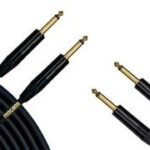The D Minor Scale Guitar is a fundamental scale for guitarists of all levels. Understanding and practicing minor scales like D minor opens up a world of musical possibilities, allowing you to play soulful melodies, write compelling riffs, and improvise effectively in minor keys. This guide will provide a comprehensive breakdown of the D minor scale, covering its patterns, shapes on the fretboard, music theory, and practical application for guitar players.
What is the D Minor Scale?
The D minor scale, also known as the natural D minor scale, is a seven-note scale characterized by its melancholic and often dramatic sound. It’s built using a specific pattern of whole and half steps, giving it a distinctive minor tonality. The notes in the D minor scale are:
D – E – F – G – A – Bb – C
This sequence follows a distinct interval pattern: Whole – Half – Whole – Whole – Half – Whole – Whole (W-H-W-W-H-W-W). In terms of semitones on the guitar fretboard, this translates to 2 – 1 – 2 – 2 – 1 – 2 – 2.
The D minor scale shares the same notes as the F Major scale, making F Major its relative major. Musically, the D minor scale is also identical to the D Aeolian mode, one of the diatonic modes derived from the major scale.
D Minor Scale Shapes and Patterns on the Guitar
To navigate the D minor scale effectively on the guitar, it’s crucial to learn different shapes or positions along the fretboard. These shapes are interconnected and allow you to play the scale across the entire neck. Here are some essential D minor scale shapes:
Shape 1: 9th Position
Starting around the 9th fret, this shape is a common starting point for learning the D minor scale. It provides a comfortable and visually accessible pattern to begin with.
Shape 3: 2nd Position
Positioned lower on the neck around the 2nd fret, this shape offers another perspective on the D minor scale and helps connect different areas of the fretboard.
Shape 5: 7th Position
Located around the 7th fret, Shape 5 is another vital pattern to master, contributing to a complete understanding of the D minor scale across the guitar neck.
D Minor Scale Across the Full Fretboard
Visualizing the D minor scale across the entire fretboard is essential for improvisation and understanding how the different shapes connect. The diagram below illustrates the D minor scale spanning the guitar’s neck. Notice how the root notes (D) appear in various positions, reinforcing the tonal center.
D Minor Scale Theory: Intervals and Scale Degrees
Understanding the theory behind the D minor scale deepens your musical knowledge and allows for more informed playing. Here’s a breakdown of intervals and scale degrees:
| Formula | Notes | Intervals | Degrees |
|---|---|---|---|
| 1 | D | Unison | Tonic |
| 2 | E | Major Second | Supertonic |
| b3 | F | Minor Third | Mediant |
| 4 | G | Perfect Fourth | Subdominant |
| 5 | A | Perfect Fifth | Dominant |
| b6 | Bb | Minor Sixth | Submediant |
| b7 | C | Minor Seventh | Subtonic |
The interval formula for the D minor scale further clarifies the note relationships:
| Notes (Ascending) | Interval |
|---|---|
| D-E | Major Second |
| D-F | Minor Third |
| D-G | Perfect Fourth |
| D-A | Perfect Fifth |
| D-Bb | Minor Sixth |
| D-C | Minor Seventh |
| Notes (Descending) | Interval |
|---|---|
| D-C | Major Second |
| D-Bb | Major Third |
| D-A | Perfect Fourth |
| D-G | Perfect Fifth |
| D-F | Major Sixth |
| D-E | Minor Seventh |
(Abbreviations: M = Major, m = Minor, P = Perfect)
Chords in the Key of D Minor
The D minor scale provides the foundation for chords that naturally harmonize within the key of D minor. These chords are commonly used in songs and compositions written in D minor:
| Chords in D Minor |
|---|
| Dm, Dm7, Dm9, Dm11 |
| Edim, Em7b5 |
| F, Fmaj7, F6, F6/9, Fmaj9, Fmaj13 |
| Gm, Gm7, Gm6, Gm9, Gm11, Gm13 |
| Am, Am7 |
| Bb, Bbmaj7, Bb6, Bb6/9, Bbmaj9 |
| C, C7, C6, C9, C11, C13 |
The Dm chord is the tonic chord in D minor, and Dm7 is the tonic 7th chord, both central to the key’s sound.
Practice and Application
Learning the D minor scale is a rewarding endeavor for any guitarist. Start by practicing each shape individually, focusing on accuracy and smooth transitions between notes. Once comfortable with the shapes, begin connecting them to play the scale across the fretboard.
To apply your knowledge, try improvising over D minor backing tracks. Experiment with the different shapes and listen to how the D minor scale sounds in a musical context. Understanding the theory and practicing the shapes will significantly enhance your guitar playing and musical vocabulary. Explore D minor jam tracks to further hone your skills and musicality.

